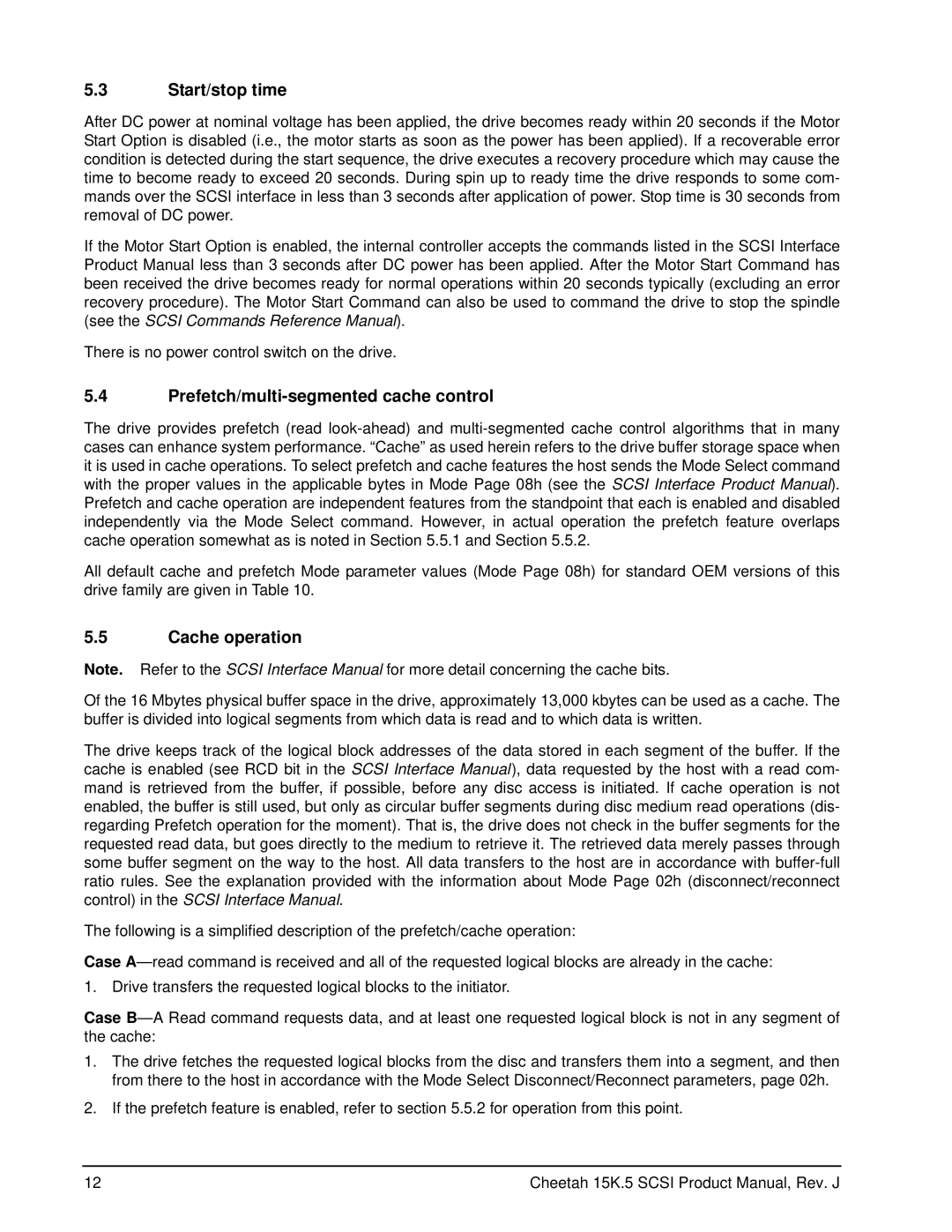5.3Start/stop time
After DC power at nominal voltage has been applied, the drive becomes ready within 20 seconds if the Motor Start Option is disabled (i.e., the motor starts as soon as the power has been applied). If a recoverable error condition is detected during the start sequence, the drive executes a recovery procedure which may cause the time to become ready to exceed 20 seconds. During spin up to ready time the drive responds to some com- mands over the SCSI interface in less than 3 seconds after application of power. Stop time is 30 seconds from removal of DC power.
If the Motor Start Option is enabled, the internal controller accepts the commands listed in the SCSI Interface Product Manual less than 3 seconds after DC power has been applied. After the Motor Start Command has been received the drive becomes ready for normal operations within 20 seconds typically (excluding an error recovery procedure). The Motor Start Command can also be used to command the drive to stop the spindle (see the SCSI Commands Reference Manual).
There is no power control switch on the drive.
5.4Prefetch/multi-segmented cache control
The drive provides prefetch (read
All default cache and prefetch Mode parameter values (Mode Page 08h) for standard OEM versions of this drive family are given in Table 10.
5.5Cache operation
Note. Refer to the SCSI Interface Manual for more detail concerning the cache bits.
Of the 16 Mbytes physical buffer space in the drive, approximately 13,000 kbytes can be used as a cache. The buffer is divided into logical segments from which data is read and to which data is written.
The drive keeps track of the logical block addresses of the data stored in each segment of the buffer. If the cache is enabled (see RCD bit in the SCSI Interface Manual), data requested by the host with a read com- mand is retrieved from the buffer, if possible, before any disc access is initiated. If cache operation is not enabled, the buffer is still used, but only as circular buffer segments during disc medium read operations (dis- regarding Prefetch operation for the moment). That is, the drive does not check in the buffer segments for the requested read data, but goes directly to the medium to retrieve it. The retrieved data merely passes through some buffer segment on the way to the host. All data transfers to the host are in accordance with
The following is a simplified description of the prefetch/cache operation:
Case
Case
1.The drive fetches the requested logical blocks from the disc and transfers them into a segment, and then from there to the host in accordance with the Mode Select Disconnect/Reconnect parameters, page 02h.
2.If the prefetch feature is enabled, refer to section 5.5.2 for operation from this point.
12 | Cheetah 15K.5 SCSI Product Manual, Rev. J |
